I headed over there with my camera this weekend, and it didn't disappoint!
While we were shoveling mulch, I told him that even without seeing the grove I was 95% sure that it was "Yellow Groove" bamboo (Phyllostachys aureosulcata). That's the most commonly-planted bamboo in the St. Louis area, and if it's a large, old planting that makes it even more likely that it's Yellow Groove.
The grove is hidden behind some scrubby bushes (probably bush honeysuckle) on the side facing the road, so it's a bit difficult to notice that anything unusual is here.
On the other side though (the west or southwest side) it's another story though:
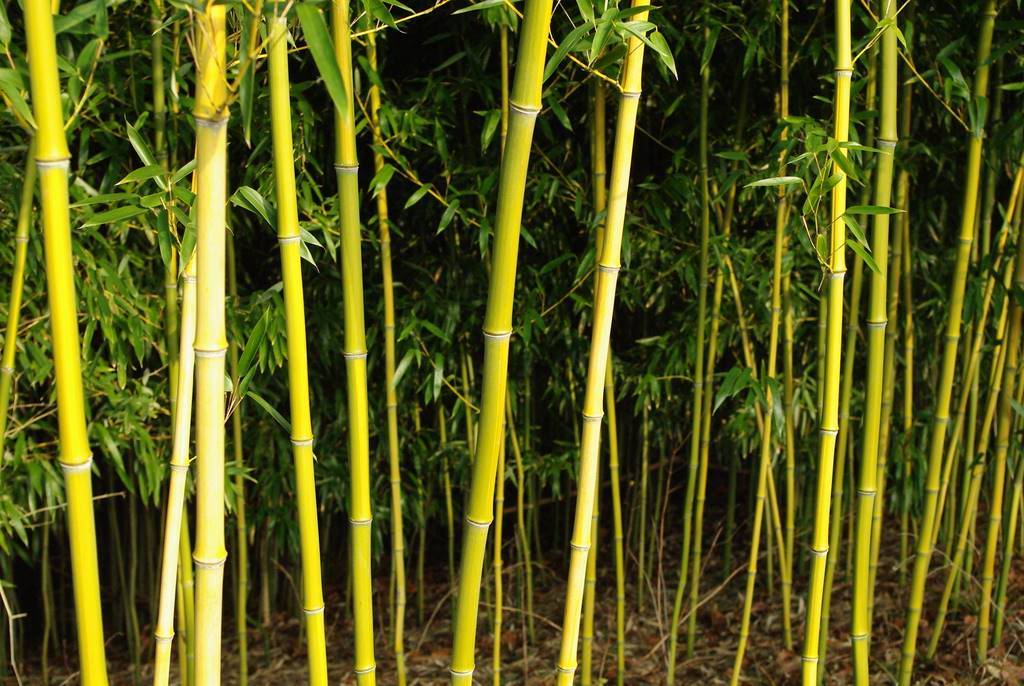 |
| This side gets lots of sun, which turns the culms yellow. |
Of course you can't see this side unless you climb onto the base of a hill that is (was?) a landfill, so most people probably never see this. The landscape service does though, as I'm sure they're mowing hundreds of shoots down every spring.
I should have paced it off, but I'd estimate that this side of the grove is about 100' (30m) long:
 |
| click for much larger version to get full impact |
The interior of the grove is something special, as there are probably not too many places in the St. Louis area where you can find a walk-through grove of bamboo. You'll see specimen plantings, but something large enough to almost "lose yourself" in? This is the first one I've ever seen.
There are many dead culms in here, which is to be expected on a wild planting (that isn't regularly maintained). I believe culms on this species live about 5 years, unless they're killed by extreme cold.
The west side is extremely dense and quite dark, the culms forming an impassible wall:
The floor was littered with discarded bamboo leaves, which is quite beautiful:
Some of the culms show the characteristic zig-zag in the lower parts:
The culms looked quite large, but I estimated that they were 1.5" or so thick. A couple of years ago I would have probably guessed 2" or more, but I've learned that culms always seem thicker than they actually are.
After getting this on the computer and holding up my hand to match the size, I measured that this one is 1-3/8" (3.5 cm), so even my educated guess was high. Still quite impressive -- until I see a 3" culm somewhere that is (a different species, in a warmer climate).
I never thought that there would be a walk-through bamboo grove just a few miles from my house!
.

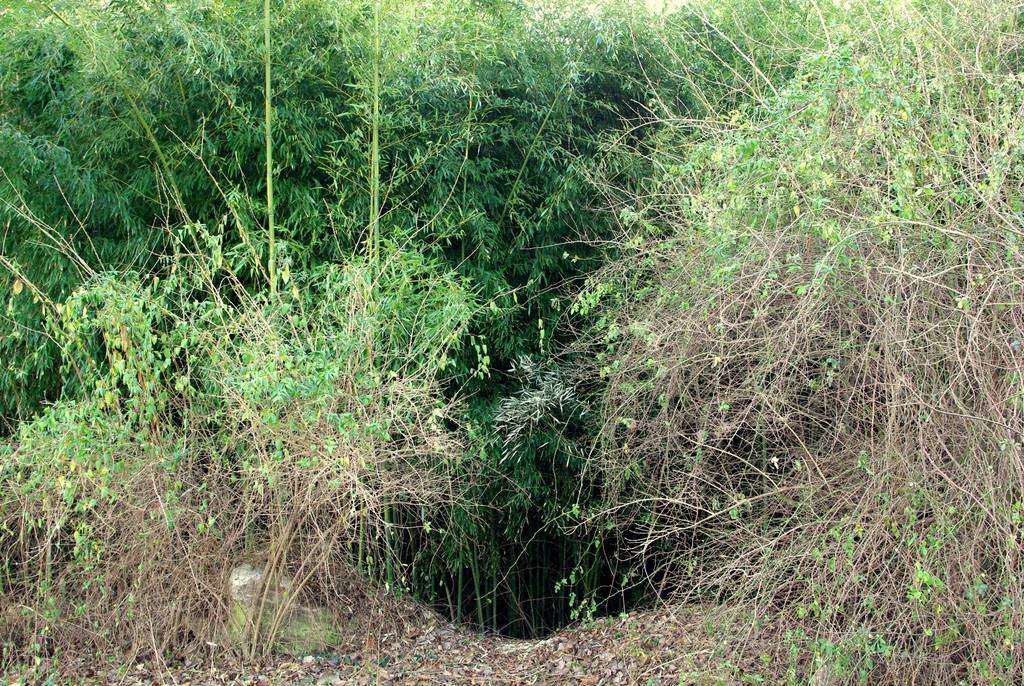

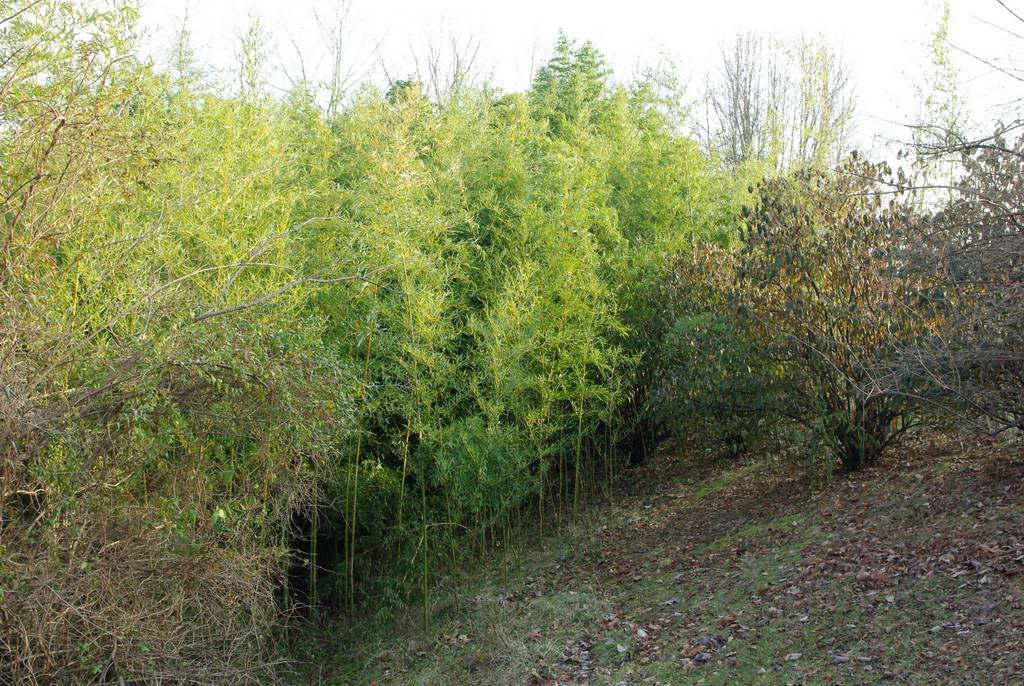
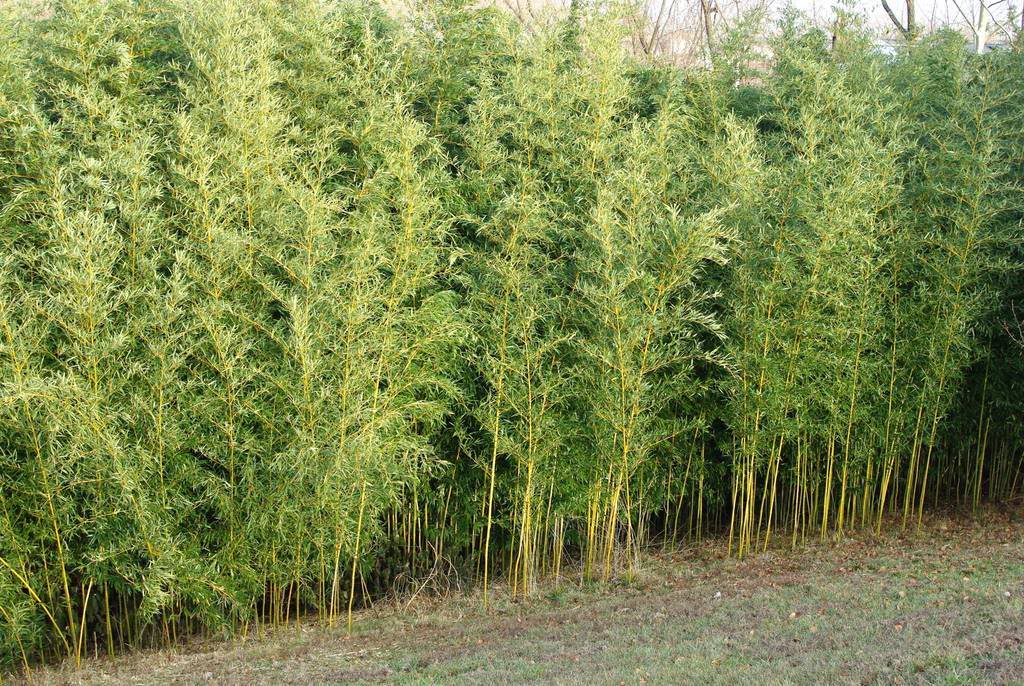
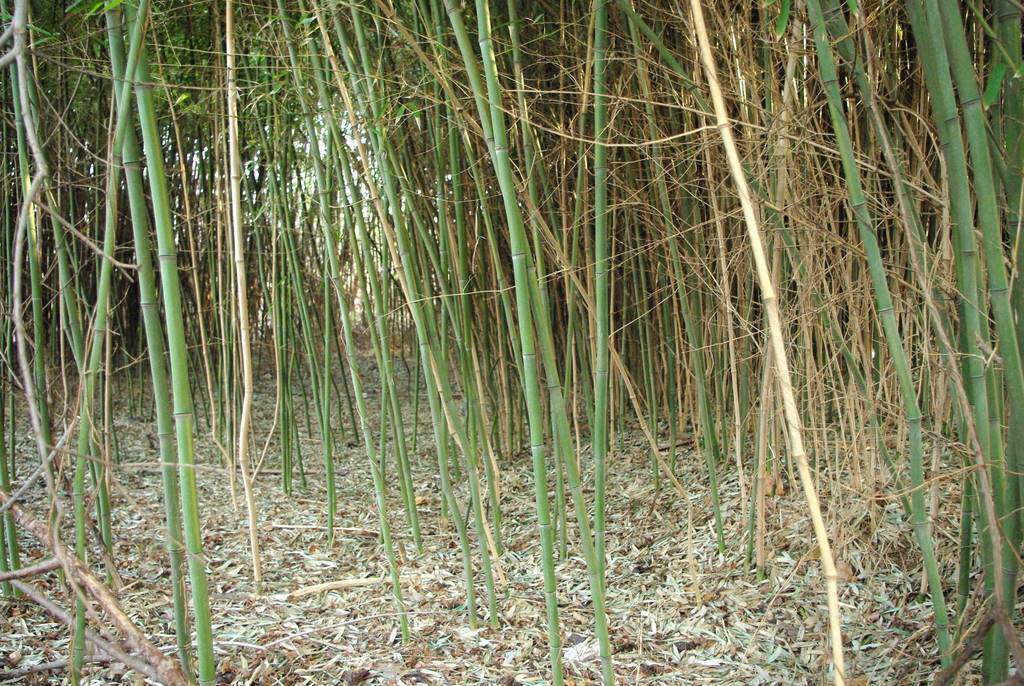
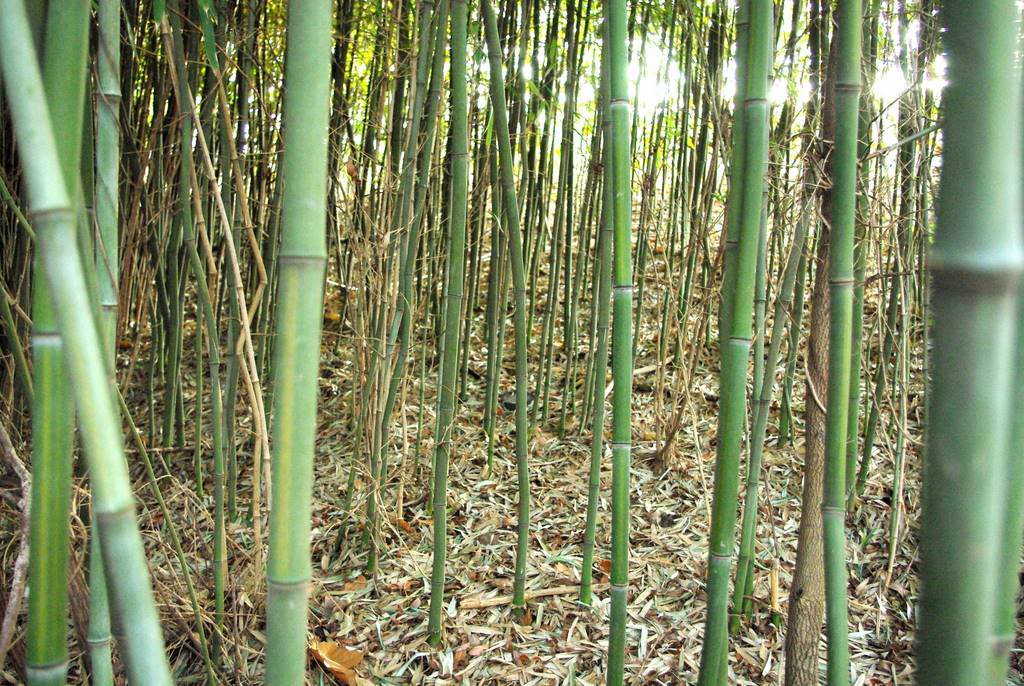
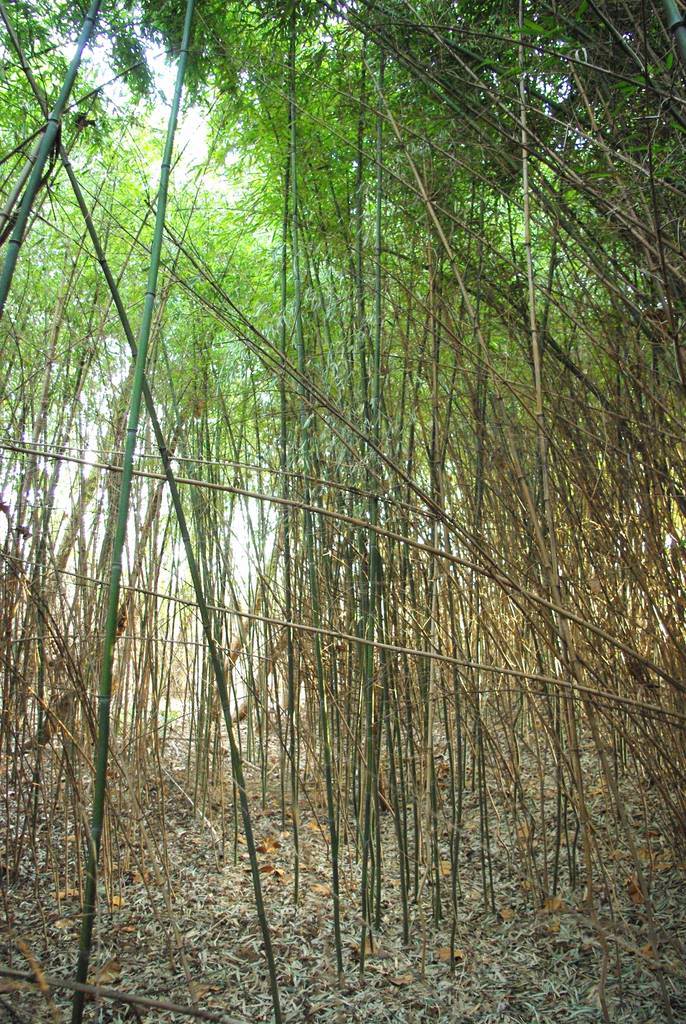
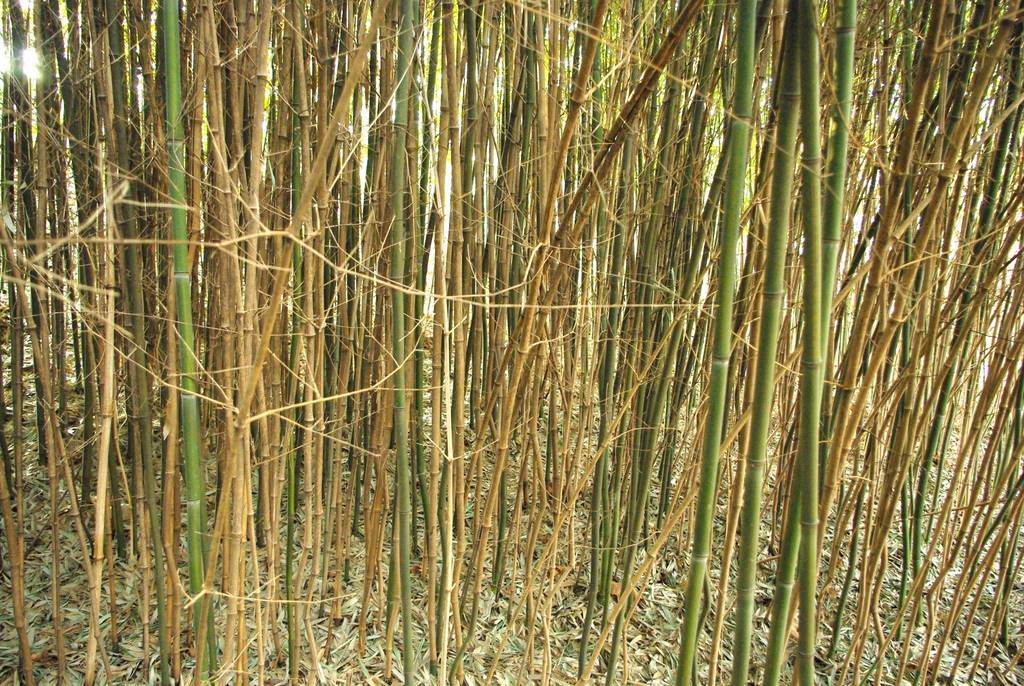
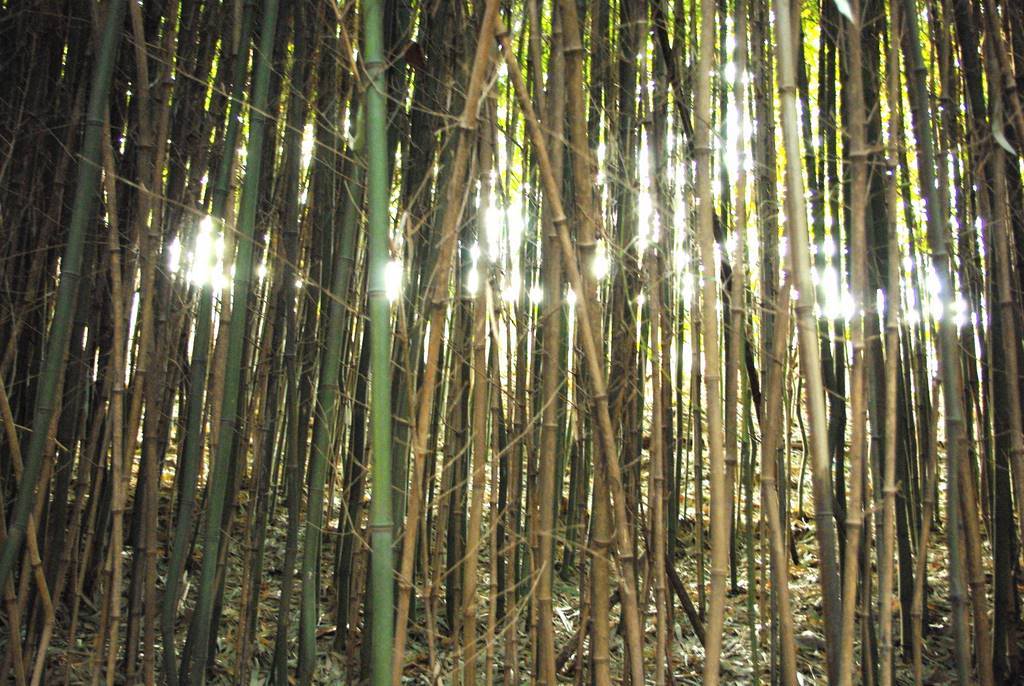
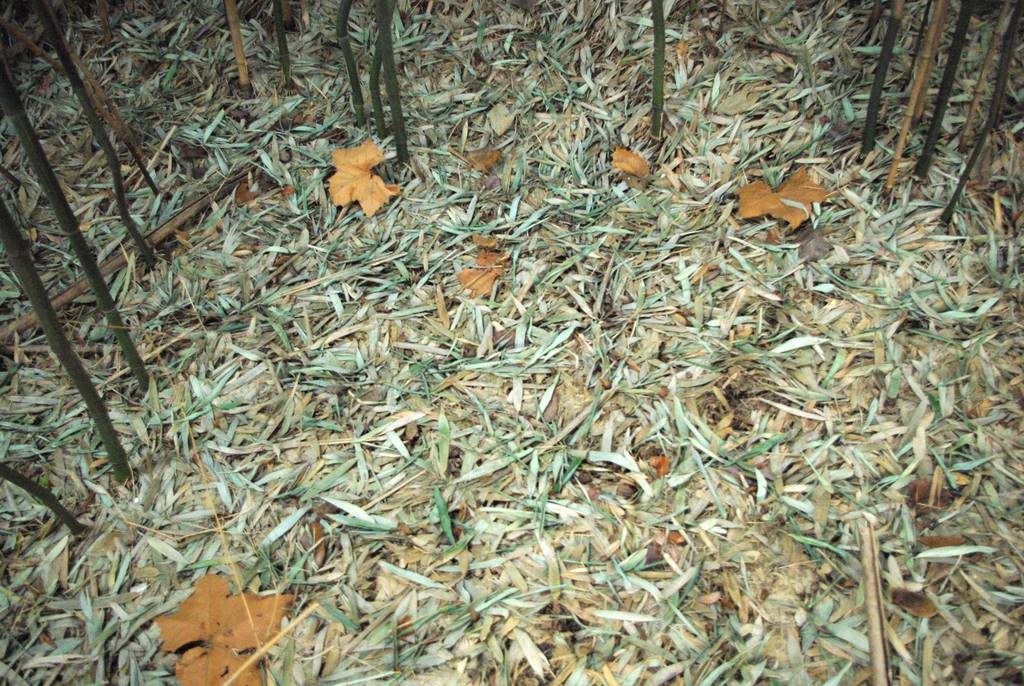
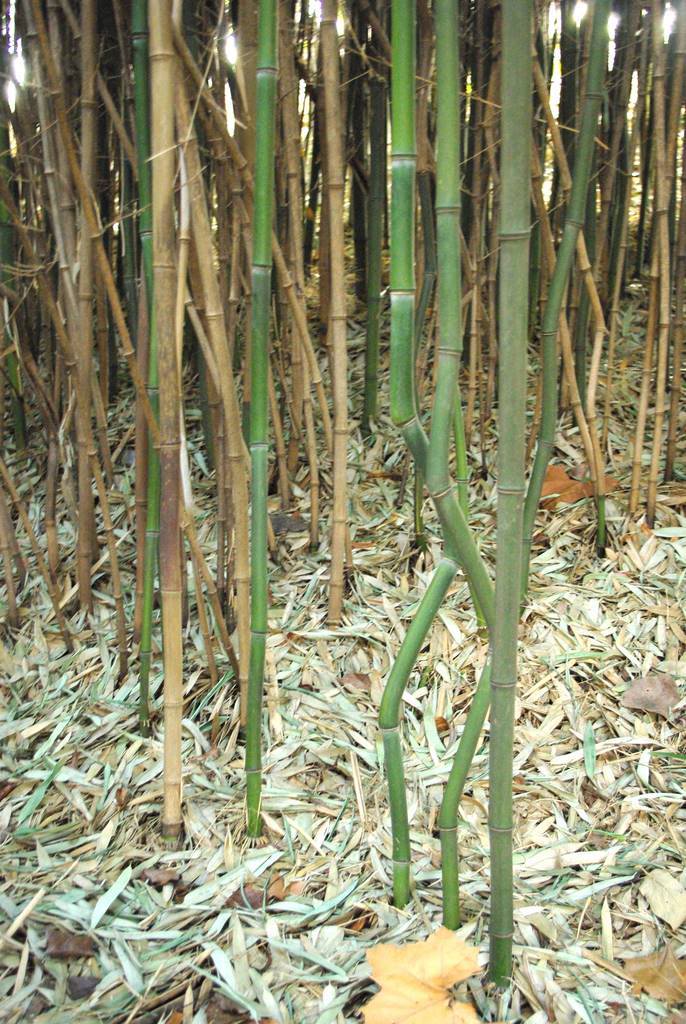
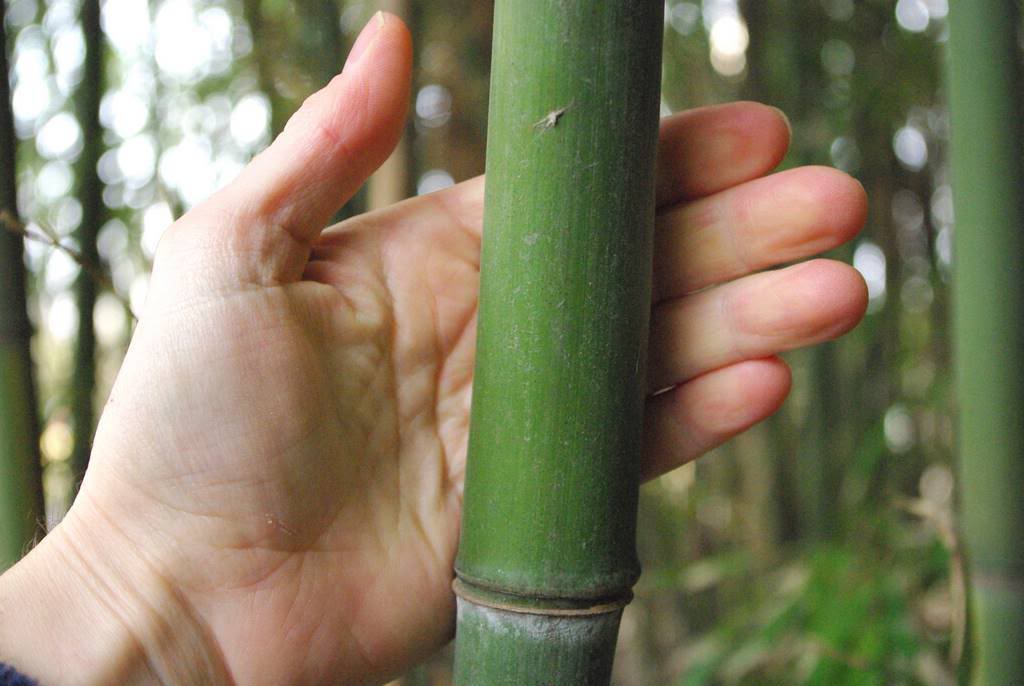
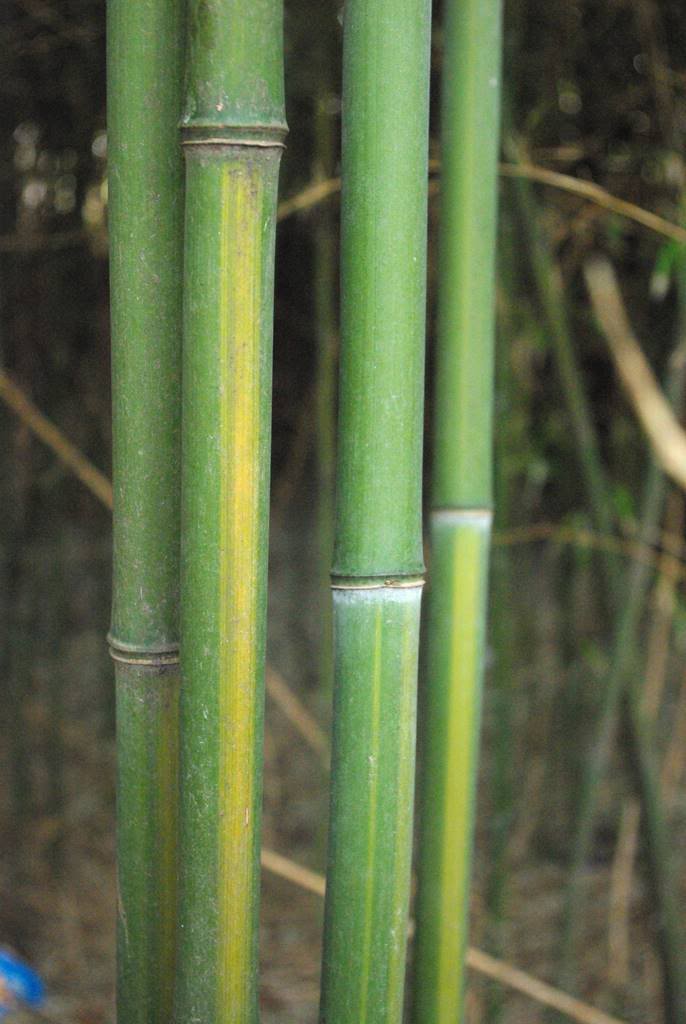
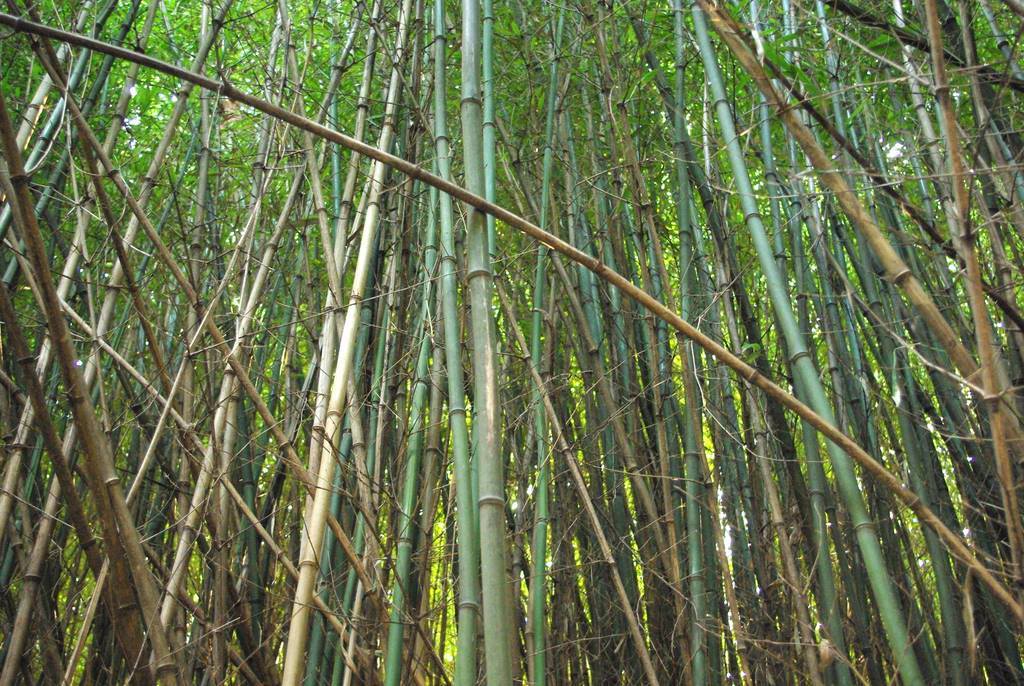
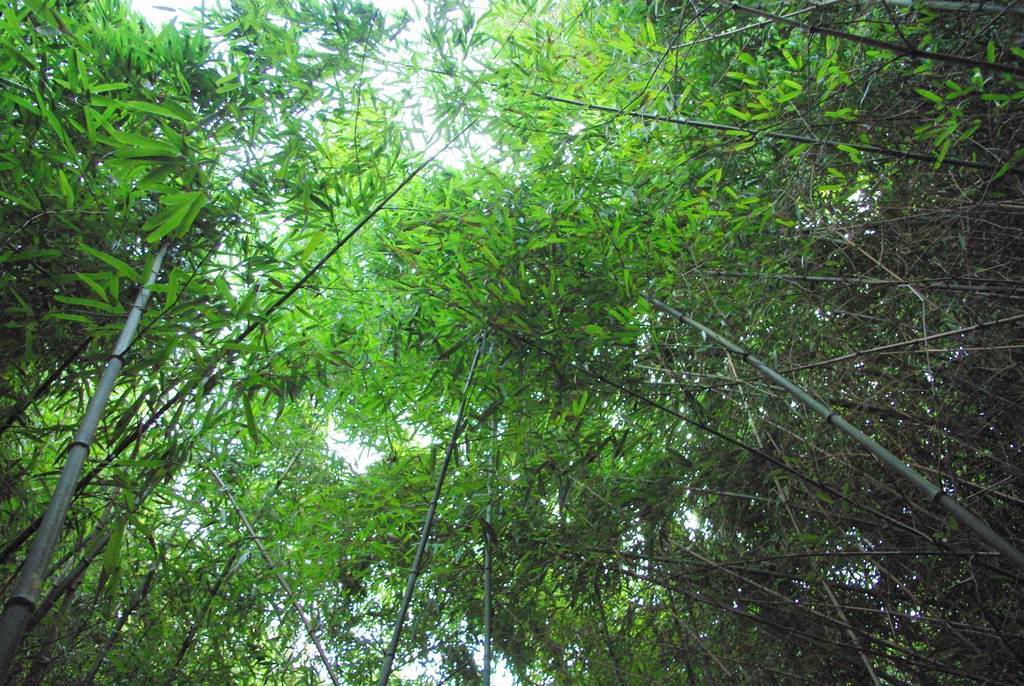
Wow, what a sight! It makes you wonder how many other hidden groves are out there. This kind of discovery thrills me even more than visiting a botanical garden where everything is expectedly neat and tidy. I wonder who owns the land this grove is on? Who planted it and when? These questions are probably hard, if not impossible, to answer.
ReplyDeleteThat is the type of grove I would love to have, but a huge grove takes time up north...
ReplyDeleteHopefully my Ph. parvifolia can compare to this grove... someday
Great pictures of the grove! Who would think that close to a major city in the U.S. that's just sitting out there? What do you think the purpose of the grove is/was? Or just decorative?
ReplyDeleteFred: not sure. I don't know if there were houses here that were torn down when the landfill was created -- it may have been in a yard. Not sure I'll ever be able to find out.
ReplyDeleteThat's the largest wild grove I've ever seem a picture of. Typically wild groves of YG around here are limited to around 1 inch by 15ft, but it looks like the grove you discovered has culms around 25ft.
ReplyDeleteActually I've seen a picture of a 2-3 incher claiming to be YG, but it looked more like vivax huangwenzhu inversa so it might be mis identified.
ReplyDeleteSteve: how can you tell the height from these photos?
ReplyDeleteIt's very hard to tell, but seeing some photos of inside the grove, it looks like branching doesn't start until 10ft or more and when YG culms are almost at the 1.5 inch mark, I usually find them to also break 25ft.
ReplyDeleteI find it interesting how the culms on the edge of the grove branch from only a few feet above the ground while the ones in the center don't branch until very far up which is probably because new shoots need to gain that much height in order for their foliage to get light exposure.
Can some of the culms be collected for personal projects?
ReplyDeleteFor what it is worth there is a small grove slowly growing in Bridgeton near my home. Pretty sure it is also yellow groove. It is in the area where the airport bought out homes and now they just maintain vacant land. I'm sure it was someones backyard planting but with the house gone the grove adds a few feet every year. I drive by regularly wishing it was in my back yard LOL
ReplyDeleteWhere is this grove located exactly? I'd like to dig a couple of specimens for transplanting.
ReplyDeleteFound out the grove is owned by the landfill but they are soon cutting it down so go dig them up while you can
DeleteThey are building homes on the landfill
DeleteThe grove is probably on private property, so I don't know what digging is allowed. It's on Sulphur Spring road at the entrance to the landfill -- at the point where it changes to Vance road.
ReplyDeleteI'd love to know where this one is, I know of 1 already that's located in a north county area. Not nearly this size though.
ReplyDeleteWhere is the location I live in st.louis and ^ where in north county ?
ReplyDeleteWhere is the north county one?
ReplyDeleteBrendan: Brady commented about one in Bridgeton, but I don't know myself where any of the north county groves are. Sorry!
ReplyDelete